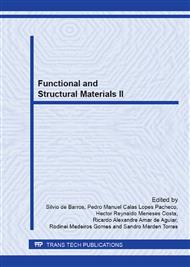p.49
p.57
p.65
p.77
p.83
p.89
p.99
p.107
p.113
Monitoring Fatigue Crack Growth in Fracture Mechanics Specimens with Piezoelectric Sensors
Abstract:
This paper presents the results of an experimental study on the application of piezoelectric dynamic strain sensors for monitoring the crack growth in fracture mechanics specimens. The performance of the piezoelectric sensors was assessed through fatigue crack propagation tests in three point bend (TPB) specimens and compact tension (CT) specimens. Piezoelectric sensors of lead zirconate titanate (PZT) were placed close to the crack edge of TPB specimens and piezoelectric polyvinilidene fluoride polymer (PVDF) was bonded to the back face of CT specimens. The piezoelectric sensors detect the crack growth by monitoring changes in the dynamic strain field of the specimen. In its simplest mode, the piezoelectric sensors behave like dynamic strain gages, with the main advantage of having a high sensitivity which allows detection of lower strain levels and lower increase in crack length.
Info:
Periodical:
Pages:
83-88
Citation:
Online since:
June 2013
Keywords:
Price:
Сopyright:
© 2013 Trans Tech Publications Ltd. All Rights Reserved
Share:
Citation:


